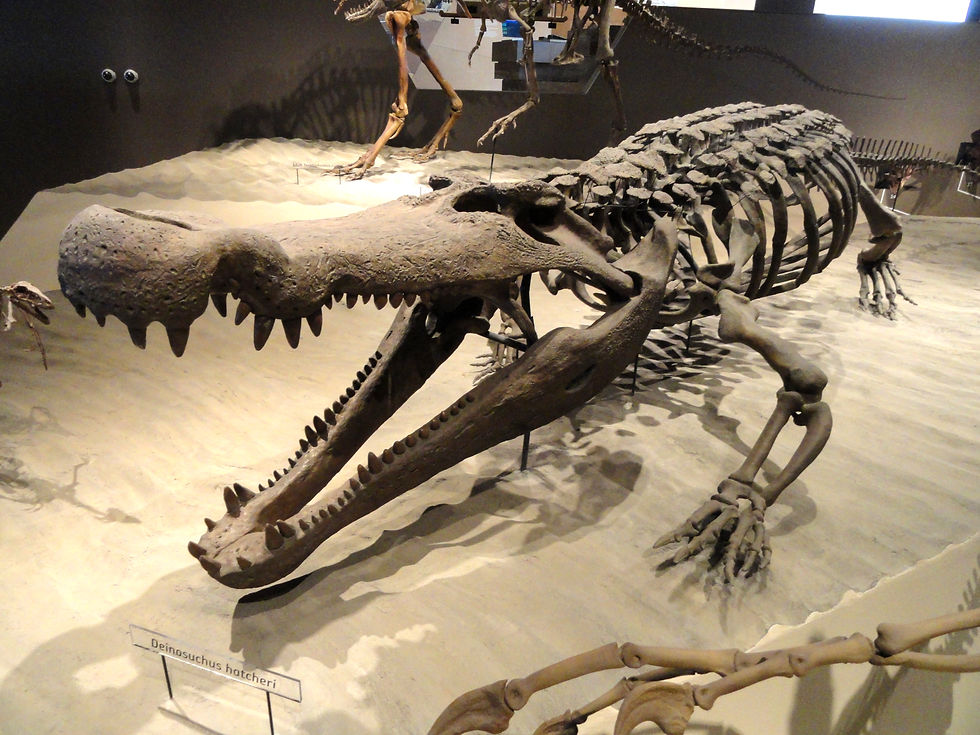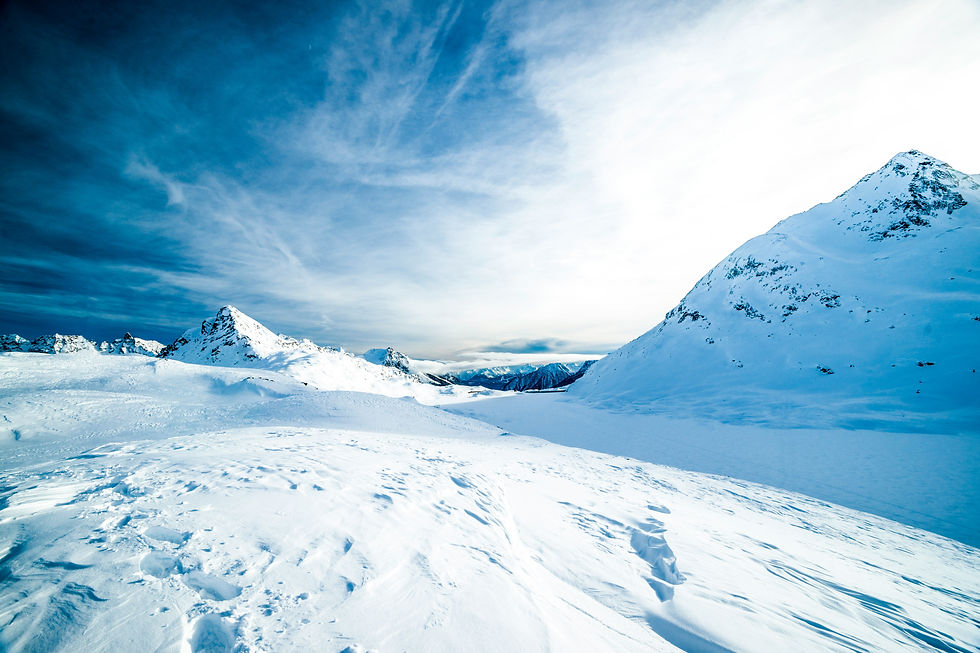Fossil Coast Explores UK UNESCO Global Geopark's (Part 1 of 2)
- Wayne Munday
- Aug 7, 2022
- 8 min read
Updated: Dec 17, 2025
Fossil Coast Drinks Co was founded on the idea of capturing geological stories in a bottle, inspired initially by the Jurassic Coast and now expanding across the UK and beyond. This two-part blog series explores the designation of UK UNESCO Global Geoparks and their role in protecting landscapes of international geological and scientific importance. Part one focuses on the Cuilcagh Lakelands Geopark, the North Pennines Geopark, and the North West Highlands Geopark—three regions that showcase extraordinary geological history shaped by deep time, tectonic forces, and ice ages. Together, these geoparks highlight how Earth heritage, education, conservation, and sustainable geotourism that connects us with the planet’s geological past.

The first of this two part blog will explore the importance of UNESCO designating a global network of areas whose landscapes have international geological heritage and scientific significance including the Cuilcagh Lakelands Geopark, North Pennines Geopark and North West Highlands Geopark.
Part two in the series shall explore the remaining UK Global Geoparks of the Fforest Fawr Geopark, English Riviera, GeoMôn Geopark and Geopark Shetland and The Black Country Geopark.
UNESCO Global Geopark Designation
The United Nations Educational, Scientific and Cultural Organization (UNESCO) is a specialised agency of the United Nations aimed at promoting world peace and security through international cooperation in education, arts, sciences and culture.

Part of their mission is the listing and designation of areas around the world for their heritage, biodiversity, cultural heritage, creativity, language, learning and global geoparks.
Currently there are 177 UNESCO Global Geoparks (UGGp) in 46 countries across the globe covering a total area of 370,662 km².
The initiative to designate Geoparks started in 2001 and by 2004 the Global Geoparks Network (GGN) an international partnership developed under the umbrella of UNESCO was formed.

By 2014 the Global Geoparks Network became an international non-profit association under French law with its headquarters in Paris.
The Global Geoparks Network is now the official partner of UNESCO for the operation of the UNESCO Global Geoparks worldwide.
The GGN under the umbrella of UNESCO serves to develop models of best practice and set quality-standards for territories that integrate the protection preservation of Earth heritage sites in a strategy for regional sustainable economic development.
The GGN now includes the Asia – Pacific the Asia-Pacific Geoparks Network (APGN); European Geoparks Network (EGN) and Latin American and Caribbean Geoparks Network (LACG).
The Global Geoparks Network organizes co-operation and mutual assistance between Global Geoparks and between Global Geopark professionals. The importance in the designation of a Global Geopark is highlighted in their membership objectives.
to promote the equitable geographical establishment, development and professional management of Global Geoparks,
to advance knowledge and understanding of the nature, function and role of Global Geoparks;
to assist local communities to value their natural and cultural heritage;
to preserve Earth heritage for present and future generations;
to educate and teach the broad public about issues in geo-sciences and their relation with environmental matters and natural hazards.
to ensure sustainable socio-economic and cultural development based on the natural (or geological) system
to foster multi-cultural links between heritage and conservation and the maintenance of geological and cultural diversity, using participatory schemes of partnership and management;
to stimulate research when appropriate;
to promote joint initiatives between Global Geoparks (e.g., communication, publications, exchange of information, twinning).

European Geoparks
In Europe there are 94 Geoparks in 28 European Countries and the main focus of this network is to promote the “European Geoparks” as a trade mark and brand for high-quality geotourism.
Geotourism is defined as integrated tourism that sustains or enhances the distinctive geographical character of a place, its environment, heritage, aesthetics, culture, and the well-being of its residents.
Geotourism is still a niche area of travel with increasing interest for schools, universities, international tourists, scientists and the general public within the local and regional community.
Global Geoparks in the United Kingdom
In the UK there are eight geoparks spanning England, Scotland, Wales including the cross-border of Northern Ireland with Ireland. In this first part of the blog we shall discover Cuilcagh Lakelands Geopark, North Pennines Geopark and North West Highlands Geopark.
Cuilcagh Lakelands Geopark
Previously known as the “The Marble Arch Caves Global Geopark” the Cuilcagh Lakelands Geopark is a Carboniferous karst landscape. The Geopark is located across the border of County Fermanagh in Northern Ireland (UK) and Cavan in the Republic of Ireland.
The Cuilcagh Lakelands Geopark is predominantly formed from a sparsely fossiliferous Dartry Limestone dating back to between 330 – 337 million years ago. Formed during the Asbian Substage of the fourth of five substages of the Visean Stage in the British Carboniferous stratigraphic scheme.

The underlying limestone geology of the Cuilcagh Lakelands Geopark is soluble and so its hydrology has created a karst landscape of distinctive landforms.
Within this landscape is the longest known underground cave system in Northern Ireland as well as steep sided gorges, cascading waterfalls, ancient woodland and turbulent rivers draining from the north slope of Cuilcagh Mountain.
This geopark is also a destination along the European Atlantic Geotourism Route from Ireland and the UK, to France, Portugal and Spain over to the Atlantic Islands of Lanzarote and down to the Azores.

The Cuilcagh Lakelands Geopark landscape has also been greatly influenced by the last Ice Age.

One of the best ways to enjoy this landscape and explore many of the important sites of the Marble Arch Caves is to walk The Cavan Way.
This is a 26 Km National Trail stretching from the Erne Lakes in Fermanagh to the North Leitrim Glens linking up with both the Ulster Way a 1,024 Km circular walking route taking in the six counties of Northern Ireland with the Leitrim Way a 56 Km walk from Manorhamilton to Leitrim Village.
Both of these routes connect with the Beara-Breifne Way inspired by the legendary 17th-Century March of Dónal Cam O’Sullivan Beare the last great Chieftain of West Cork and South Kerry. The Beara Breifne Way runs 500 km north from the tip of Beara Peninsula at Dursey in County Cork to the Blacklion area in the Breifne area of County Leitrim and Cavan.
North Pennines Geopark
The North Pennines UNESCO Global Geopark is also an Area of Outstanding Natural Beauty (AONB). This geopark is predominantly an upland area stretching across the counties of County Durham, Northumberland and Cumbria. One of the best ways to enjoy the North Pennines Geopark is to walk the Pennine Way a National Trail that passes through the North Pennines

The geology of this area dates back 500 million years to the Cambrian Period the first geological period of the Palaeozoic Era and of the Phanerozoic Eon. This was a time when many early animal groups and different forms of life began to appear in Earth’s fossil record.
Layered on top of the Cambrian rocks is carboniferous limestone, shale and sandstone formed during the Stephanian Stage or the fifth of six stages of the Carboniferous Period in the British Carboniferous stratigraphic scheme.
Dating back 295 million the carboniferous limestone, shale and sandstone in this area experienced deformation for a period of about 15 million years from the forces of the Variscan Orogeny or mountain building event where Gondwana and Laurussia collided to form the supercontinent of Pangea.

During this period a huge amount of basaltic magma ascended under pressure from the Earth’s mantle creating both vertical and horizontal intrusions across and between the Carboniferous sedimentary layers.
These intrusions are collectively known as the ‘Whin Sill’ or more recently as the ‘Great Whin Dolerite Complex’. The term ‘whin’ means hard and ‘sill’ is a flat layer of rock. This has created a landscape of sills and dykes.
The magma intrusion created an area of 1,500 square kilometres called the North Pennine Orefield. This is the second largest area of lead and zinc mineralisation in all of the British Isles.

These minerals are all primary, unaltered or hypogene where mineralisation happens when ascending in thermal aqueous solutions derived from a magmatic source. At the surface and near surface a lot of supergene alteration processes have affected the deposits creating a variety of secondary sulphides, clays, hydroxides and sulphate minerals.
Successive ice ages and interglacial periods have smoothed the North Pennine landscape, creating glacial landforms and deposits leaving England’s most important peatland habitat.
North West Highlands Geopark
The gateway to the North West Highlands Geopark is Ullapool on the shores of Loch Broom in the Northern Highlands of Scotland. The geopark is just over an hour’s drive from city of Inverness and is probably one of the largest geoparks anywhere comprising 2000 km² of remote, mountainous and coastal terrain.

The North West Highlands Geopark has the oldest metamorphic rocks and oldest evidence of single cell eukaryotic non-marine life known as Stromatolites to be found anywhere in Europe's fossil record. Plus, this Geopark was the location of a giant meteorite impact around 1.3 billion years ago.
Overlooking Loch Assynt within the North West Highlands Geopark is a simple stone memorial to the remarkable geological double act called Ben Peach and John Horne. In 1907 they published the memoir, “The Geological Structure of the North-West Highlands of Scotland”. his memoir is regarded as a masterpiece of regional geoscience and an area known as the “Cradle of Geology”.

The rock of the North West Highlands Geopark is known as Lewisian Gneiss formed on the eastern margin of Laurentia between about 3 billion and 900 million years ago.
The earliest life in the Geoparks fossil record include simple-celled algal life forms called stromatolites dated at 1.2 billion years old.
During the late Cambrian Period over 500 million years ago Scotland was located within the Iapetus Ocean at the edge of a continent called Laurentia and not connected to England.
At this time the first stage of the collision by supercontinents started the Caledonian mountain-building event or Caledonian Orogeny as part for the formation of Pangea.
Some of the noticeable features of the Caledonian Orogeny within the Geopark are seen at Knockan Crag, Traligill, Loch Glencoul, Foinaven, Faraid Head, Eriboll and Whiten Head.
The Caledonian Orogeny happened in three stages. Firstly, the “Grampian Event” where the closure of Iapetus Ocean created a chain of volcanic islands and a collision creating the Grampian Highlands between 480 – 460 million years ago.
The Dalradian sedimentary sequence of marine sands, muds, silt and limestone making up the shallow seabed of the Iapetus Ocean would become metamorphic under the pressure of this collision creating the Dalradian Rocks of the Grampian Highlands.

Secondly, the "Scandian Event" where the palaeocontinent of “Baltica” formed during the Paleoproterozoic dating back 2.5 to 1.6 billion years ago.
Baltica is a combination of two cratons whose structure is part of the Earth’s crust that had attained stability and had not been deformed.
Baltica would collide with the northern highlands of Scotland 440 million years pushing together Northern Highlands and North-west Seaboard.
Thirdly, “Avalonia”, named after Newfoundland's Avalon Peninsular was an Early Palaeozoic microcontinent or more accurately a fragment of the Gondwana tectonic plate. 425 million years it collided with the region as England and Scotland joined. This marked the completion of the Caledonian Orogeny and Scotland’s geological foundations were set in place.
Coming Next...
Look out for part two in the series that shall explore the remaining UK Global Geoparks of the Fforest Fawr Geopark, English Riviera, GeoMôn Geopark and Geopark Shetland and The Black Country Geopark.









